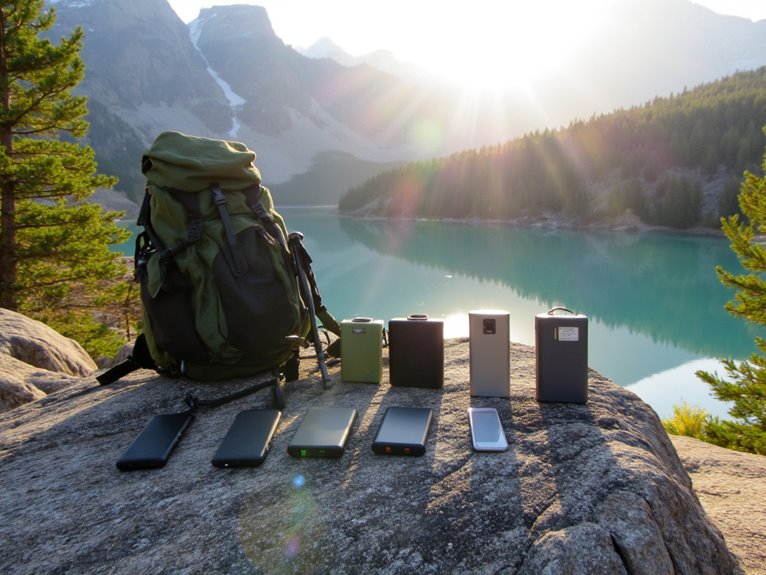Do Bear Canisters Work?
Bear canisters have consistently proven to be a reliable and effective solution for backcountry travelers to safeguard their food and scented items from curious bears, minimizing the risk of unwanted encounters in the wilderness. By understanding bear behavior and needs, outdoor enthusiasts can take proactive measures to prevent encounters. Bear canisters are specifically designed to outsmart bears, featuring a robust design that combines durability, ease of use, and cleverness. From Yosemite National Park to the Rocky Mountains, numerous backcountry travelers have successfully utilized bear canisters to thwart potential bear encounters. Now, discover the intricacies of bear canisters and how to maximize their effectiveness in the wild.
We are supported by our audience. When you purchase through links on our site, we may earn an affiliate commission, at no extra cost for you. Learn more. Last update on 7th January 2026 / Images from Amazon Product Advertising API.
Understanding Bear Behavior and Needs
When venturing into bear country, it's essential to understand the intricacies of bear behavior and needs, as these powerful omnivores are driven by an innate desire to survive and thrive in their natural habitats.
Bears are attracted to food sources, including human trash, pet food, and agricultural crops.
Their sense of smell is unparalleled, and they can detect scents from miles away.
By recognizing these habits, outdoor enthusiasts can take proactive measures to prevent encounters.
Proper food storage, waste management, and awareness of their surroundings are vital in minimizing the risk of bear encounters.
Understanding bear behavior and needs is essential in promoting coexistence and ensuring a safe experience for both humans and bears in shared wilderness spaces.
How Bear Canisters Are Designed
Bear canisters are specifically engineered to outsmart bears, featuring a robust design that combines durability, ease of use, and cleverness to safeguard food and scented items from these curious and powerful creatures.
The canisters' hard, thick-walled construction makes them impervious to bears' powerful jaws and claws.
A secure latch system and cleverly designed lid guarantee that bears cannot open the canister, even with their exceptional strength and dexterity.
The canisters are also designed with ease of use in mind, featuring simple and intuitive opening mechanisms for humans, while remaining inaccessible to bears.
Real-Life Examples of Success
Numerous backcountry travelers have successfully utilized bear canisters to safeguard their food and scented items, thwarting potential bear encounters in the process.
For instance, a group of hikers in Yosemite National Park reported using bear canisters to store their food and toiletries, which ultimately prevented a bear from approaching their campsite.
In the same vein, a solo backpacker in the Rocky Mountains credited her bear canister with keeping a curious bear at bay, allowing her to enjoy a peaceful night's sleep.
These real-life examples demonstrate the effectiveness of bear canisters in preventing unwanted bear interactions.
Common Misconceptions and Myths
Despite their proven track record, bear canisters are often shrouded in misconceptions and myths, which can lead to their ineffective or inadequate use in the backcountry.
One common myth is that bear canisters are too heavy or cumbersome, but in reality, modern designs have made them increasingly lightweight and compact.
Another misconception is that bear canisters are only necessary in areas with high bear activity, when in fact, they should be used in any area where bears are present.
Additionally, some believe that bear canisters are only for food storage, but they can also be used to store other scented items like toiletries and clothing.
Limitations and Potential Drawbacks
While bear canisters are an essential tool for backcountry safety, they are not a foolproof solution, and users should be aware of their limitations and potential drawbacks.
Despite their effectiveness, bear canisters are not a substitute for proper food storage and handling practices.
Some limitations and potential drawbacks to consider:
- Weight and bulk: Bear canisters can be heavy and bulky, making them a burden for backpackers and hikers.
- Cost: High-quality bear canisters can be expensive, making them inaccessible to some outdoor enthusiasts.
- Limited capacity: Bear canisters have limited storage capacity, requiring users to carefully plan and pack their food and scented items.
- User error: Improper use or failure to follow manufacturer instructions can render bear canisters ineffective.
Best Practices for Effective Use
To maximize the effectiveness of bear canisters, it's vital to employ a combination of common sense, attention to detail, and adherence to established guidelines.
When storing food and scented items, properly seal and tuck them away in airtight containers before placing them in the canister.
Keep the canister at least 100 yards away from camp and any trails, and avoid placing it near water sources or areas with known bear activity.
Regularly inspect the canister for signs of damage or tampering, and report any incidents to park rangers or local authorities.


